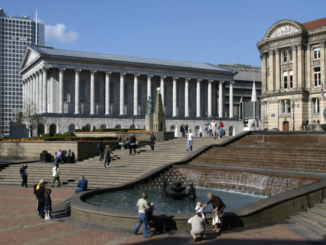
How I miss Question Time. One hankers after £30,000-an-hour Fiona Bruce pontificating on inequality before a representative audience of progressive liberals who have a relative at the BBC.
As our £110,000-a-year elected representatives take a well-deserved Easter holiday (followed by an Early May Recess) from the House of Liars and Thieves, we shall review obscure bits of railway line instead.
Last time, rural Albania sans the tracks (which had been lifted for a refurbishment) was a bit too mainstream. The kind of thing you might read about in a Guardian supplement or overhear of when eavesdropping upon a table of wives in the ladies’ bar of a down-at-heel north country golf club.
Nowadays the Iron Curtain’s Adriatic coast is over-accessible to the lower-middle classes. RW Review HQ, therefore, must cast the net wider in a no-doubt-pointless attempt to tell Puffins, a well-travelled species, of somewhere they’ve never been to, or better still, never heard of.
Not only does another country beckon, but another continent — nay, another world — a world lost amongst jungle and scrub. Having said that, I can’t remember what I did with my photographs and therefore, bearing no intention of ever returning, we must make do with Street View.
Although South America’s longest river is eight miles wide at Macapá, the teeming city of half a million is still over 90 miles from the open sea. Ten miles further inland along the Amazon, we meet, as often with big cities, the sophisticated metropolis’s rough port.
The Isle of Dogs of northern Brazil is called Porto Santana and is the terminus of the Estrada de Ferro do Amapá (EFA), also known as the Amapá Railway. Amapá province is in northern Brazil and stretches from the north bank of the Amazon, where it meets the Atlantic, to the border with French Guiana, 200 miles away.
In all, the diamond-shaped territory covers 54,000 square miles, which makes it a little larger than Greece and about the same size as Iowa.
At the other end of the EFA sits Serra do Navio. An elevation of 300 feet allows for gentle gradients along the 120-mile climb from Santana to the other end of the line.
Serra do Navio is a company town of about 6,000 souls. The original company being a partnership between Brazil’s Companhia Indústria e Comércio de Minério S.A. (ICOMI) and America’s Bethlehem Steel. This was formed to exploit deposits of manganese in the area.
In 1947, ICOMI won the bid to work the deposit, with Bethlehem becoming their partners three years later. Work began on the railway in 1954. Not connected to any other Brazilian line, the first trains ran in 1957. The line is interesting by Brazilian standards, as it is of the standard gauge of 4′ 8½” (1.44 metres).
Services ended in about 2019. With the Street View and Google Maps images being a mixture of pictures taken in 2012 and 2022, a fascinating insight into the recent history of the line is allowed.
We will begin our trip at Serra.
In 1990, a mere 35 years ago, when this humble reviewer had hair, teeth, twenty-twenty vision and could always find his photos, four passenger trains a week connected the mining town with Porto Santana.
On Mondays, the 07:01 reached Santana at 12:25. On Tuesdays and Thursdays, the departure was at 14:01, with an arrival at 19:25. On Fridays, a 20:00 departure arrived at a quarter past midnight. At five-and-a-half hours-ish for a 120-mile journey, progress was at a stately average of 22 mph.
Although much of the trackwork is now gone, we can follow the route — even if it’s been covered in road — by the giveaway gentle curves and long plumb-line straights required of a railway.
A windy, twisty road leads for about eight miles from the manganese mines to what will have been the rail loading point and workshops that remain at Serra do Navio (pictured below).

Presumably, the ore travelled by truck through the hills to the railway loading point. Nine miles later, the line has to cross the River Amapari at Pedra Branca do Amapari. In 2012, the railway station — perhaps better described as a halt — appeared in good order and with track alongside. Likewise, a nearby level crossing.
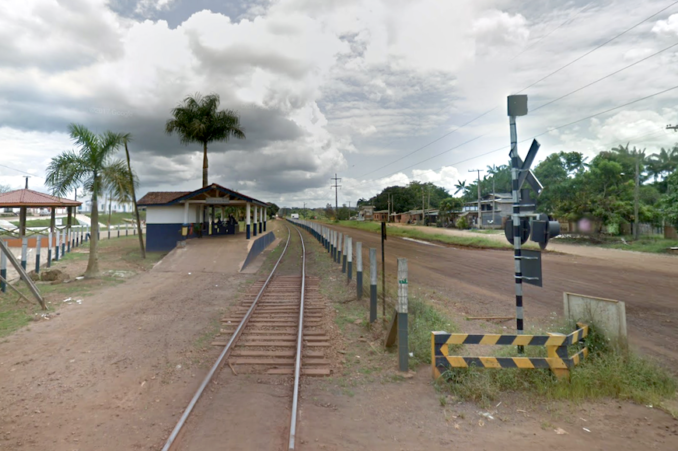
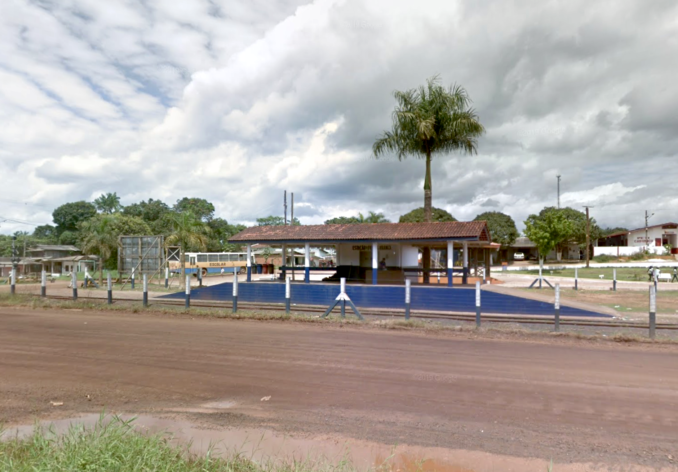
The bridge across the Amapari is also intact, but in the 2022 satellite photos show it carries a road.

In better times, we see a train crossing the river.
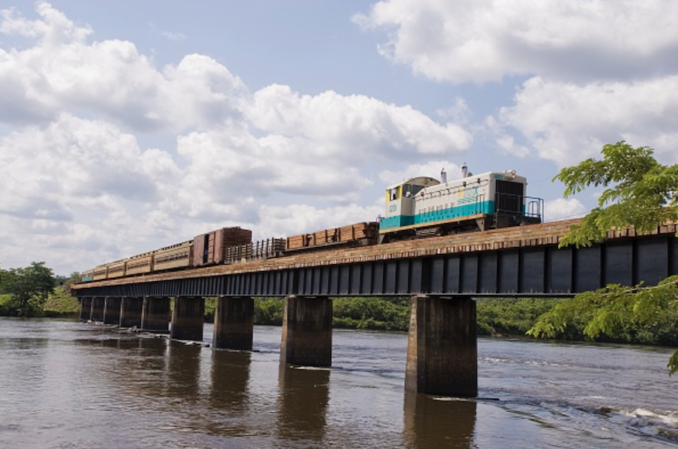
Railway bridge over the Amapari River in Pedra Branca, Amapá, Brazil,
Government of Amapá – Licence CC BY-SA 2.0
According to the helpful people at the EMD Exports Group, the locomotive is an Electro-Motive Division SW1200 built in 1955 and powered by an EMD 567C 1,200 hp engine. Behind the locomotive, we see two flatbed wagons, a boxcar and at least five passenger carriages.
Nearby on Street View, we find two abandoned flatbeds and a piece of railway equipment loaded onto a road trailer. I wonder what it’s the remains of? Given the unflanged wheels and giant horizontal gear and pin, perhaps a railway crane?


The next sizable place we reach is Porto Grande. It appears on the timetable as nearby Porto Platon, a dot on the map that has been overtaken by its rapidly growing neighbour. The downside being that Porto Grande has sprawled all over the railway line. With the Street View pictures being of 2022, we find surviving lines only south of the township and looking a bit sorry.

As we head further south, the EFA follows national highway route number 210, from which the Street View car caught glimpses of the rails. As you can see, by now nature encroaches. The lines have also lost their shiny silver sheen, suggesting no trains pass along them.
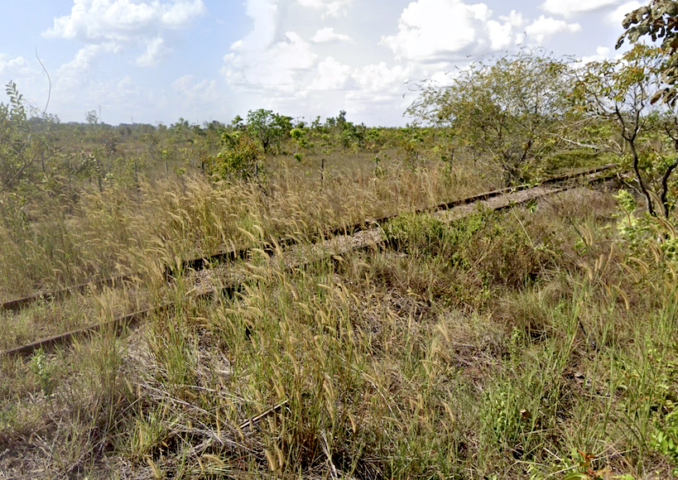
As we reach the environs of Santana, both nature and human activity overwhelm the railway.
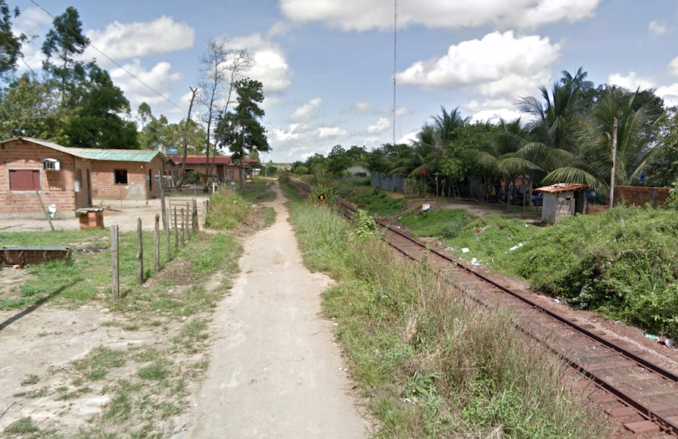
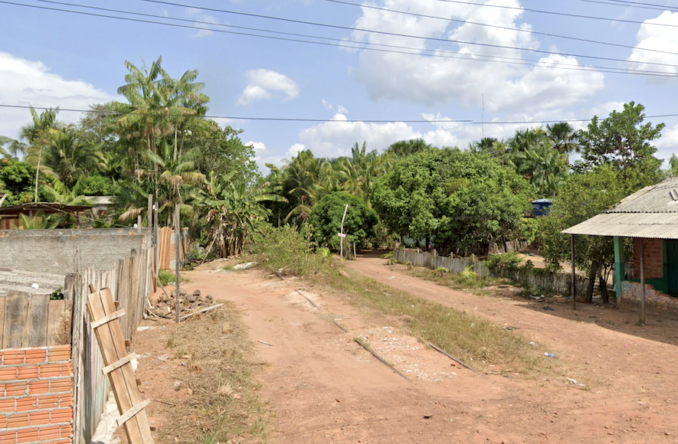
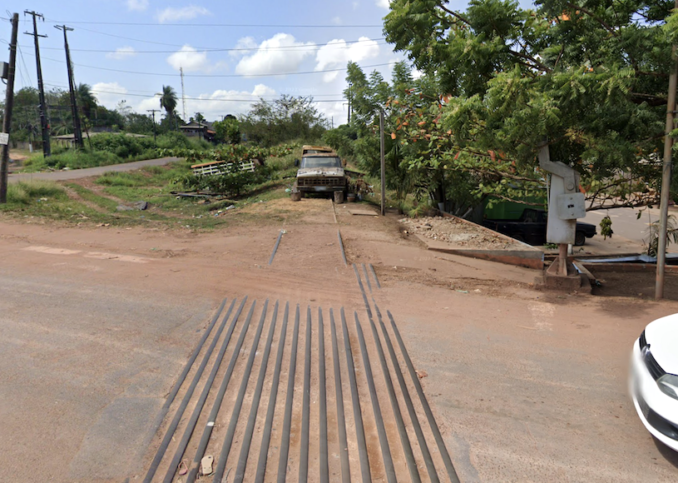
Santana station, however, appears in good repair, as do the tracks alongside. Why so? Because the passenger terminus lies away from the urban area and within the docks complex, much of which is kept secure.
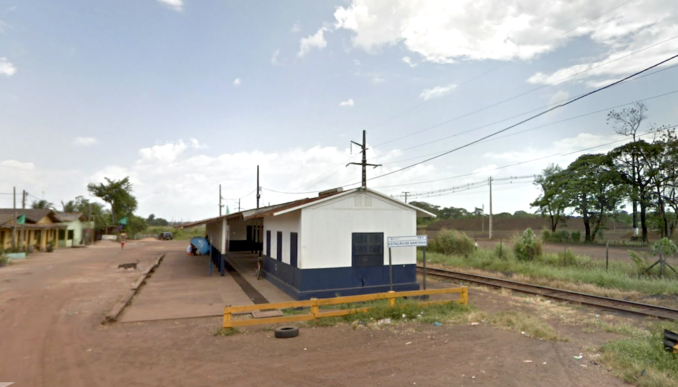
As we can see, not only is there security but in the background many mineral wagons are still present at the docks.
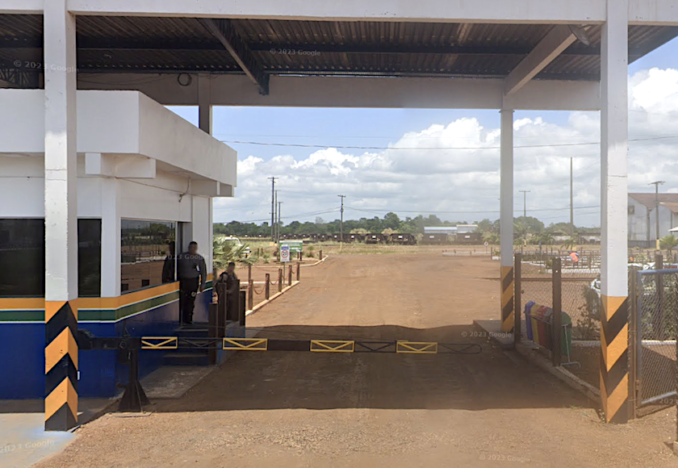
If we look at the final photograph, to the far left you can see the wreckage of a one-time floating crane pontoon which was destroyed by a landslide from the banks of the Amazon. Since then, no ore can be removed from the facility, resulting in tens of millions of dollars of manganese being trapped in the docks — hence the security.
What an interesting place!
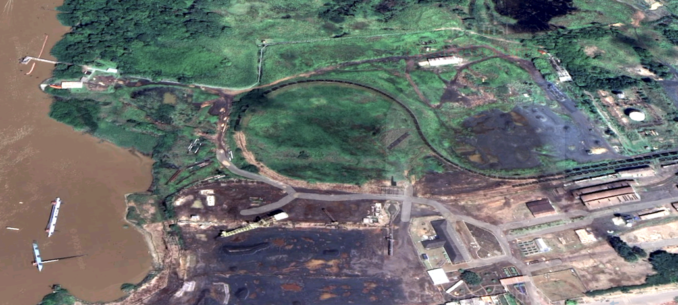
© Always Worth Saying 2025


